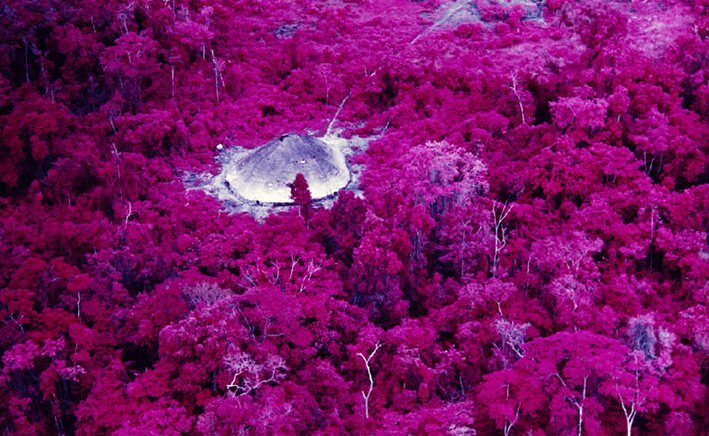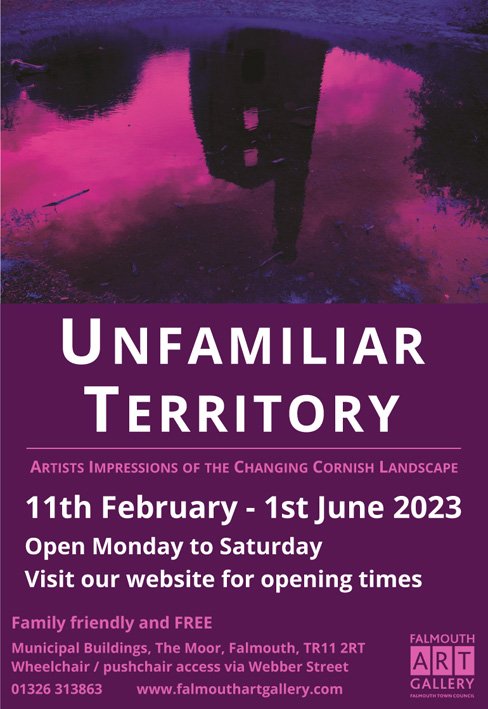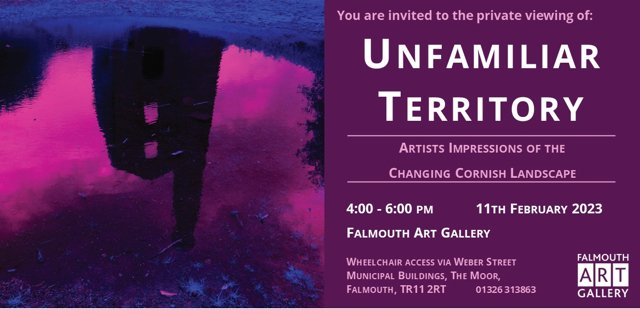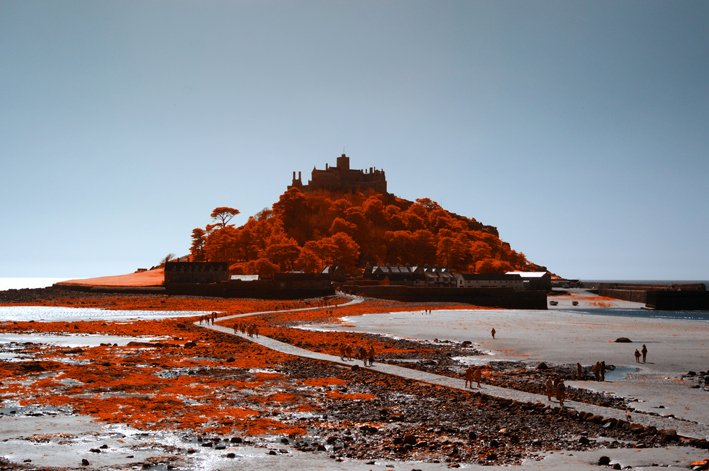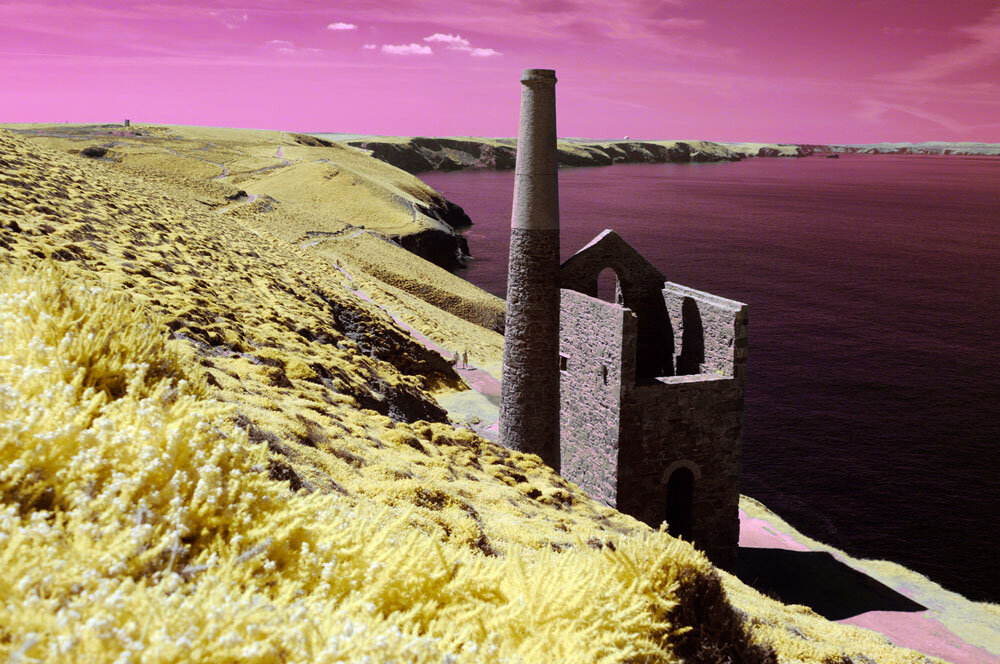From Wood to Mosse: a brief history of infrared photography
Richard Mosse, Infra
Infrared photography is a beautiful technique that reveals the invisible in nature, from blades of grass to distant galaxies.
It fuses science and art and has a fascinating past with far-reaching applications including science, medicine, botany, astronomy, forensics, military, psychedelia, ghost-hunting and fine art, amongst other subjects.
The technique, which can create ethereal, otherworldly and surreal images, reveals the invisible: infrared light cannot be seen by the human eye. For such a so-called garish technique, infrared photography has always remained hidden in plain sight.
In 1910, American physicist Robert Williams Wood took the first ever infrared photo in his backyard in East Hampton, NY, and though the image was published in a photography journal of that year, it wasn’t until the 1930s that Kodak produced infrared film to be used by the general public.
In the 1940s Kodak and the US Military co-developed Aerochrome III infrared 1443 film for purposes of air surveillance in war-torn areas, partly due to its ability to cut-through haze. In World War II, the Korean and Vietnam wars, it was used to detect man-made objects camouflaged in jungle and forest settings, as false foliage would stand out against actual foliage in infrared.
(This technique was still being used by 1975 for non-military uses, when infrared aerial photography was used to assess flood damage to agriculture in a Red River valley flood in North Dakota and Minnesota.)
Infrared colour photography was well-suited to the psychedelic 1960s. In London, photographer Karl Ferris was approached by Kodak who gave him some infrared film to experiment with. Kodak were hoping the film, which had been released by the military, could be used creatively. Ferris had been working with Jimi Hendrix, and used an infrared photo of the band in Kew Gardens for the U.S. cover of Are You Experienced? (Below left)
Keith MacMillian (known as Marcus Keef) was a British photographer whose work with record label Vertigo in the late 60s/early 70s included several iconic infrared album covers – even if several of them (Black Sabbath’s first album and Valentyne Suite by Colosseum, above right) don’t immediately jump out as being especially infrared.
Though Bob Dylan and Frank Zappa were both disdainful of the psychedelic movement, two of their images are probably the most well-known infrared photos of the late 1960s: Elliott Landy’s photo of Dylan leaning against a black car in a Woodstock forest in 1968 and the album cover of Frank Zappa’s Hot Rats, 1969.
Swiss-Brazilian photographer Claudia Andujar is now in her in her nineties and has been documenting the Yanomami people of the Amazon in Brazil for over fifty years. Discarding traditional documentary photography, she has used experimental techniques, including infrared, in an attempt to capture the shamanic culture of the Yanomami. The two examples below are from the 1970s.
Though many photographers would still use the medium – Simon Marsden took beautiful black and white infrared photos of haunted houses in Europe throughout the 1980s and 90s – it seemed to lose its popularity and respect in the photographic community; many professionals viewed it as a kitsch novelty.
Graveyard in Castlelyons, Cork, Ireland, by Simon Marsden.
So it’s surprising how many respected photographers have experimented with the technique, such as Ansel Adams, Minor White and Weegee, who first used the phrase ‘invisible light’ to describe the process, taking infrared at night with a flash.
Hollywood also used the technique from the 1930s onwards, often, but not always, for shooting day-for-night in the movies. John Ford used the technique to dramatic effect in his 1948 western Fort Apache. Soviet director Mikhail Kalatozov uses it creatively in the 1964 Soviet-Cuba propaganda film Soy Cuba (I am Cuba). It uses a wide range of experimental techniques, including infrared film – obtained from the Soviet military – several times throughout the movie. Scenes taking place in the lush countryside, in particular in the sugar cane fields, use a high contrast infrared film stock, making all the foliage look bright white and the sky dark, creating a dreamlike effect.
But ironically, it was only when Kodak discontinued its infrared Aerochrome film in 2007 that infrared photography started to enjoy a renaissance. It became a lot easier with the advent of digital photography, and the internet was a great place to learn how to do it and share images. Additionally, Aerochrome film suddenly became quite hard and expensive to get hold on, and photographers such as Richard Mosse and Edward Thompson were in a rush to get some.
Richard Mosse, Infra
Following on from Claudia Andujar’s work, perhaps, what’s fascinating about the best of the modern photographers using infrared is – for a technique often dismissed as candy floss – that heavyweight contemporary topics, including the environment, war and politics is often the basis of their work, and each has their own unique reason for using infrared: Rob Walwyn’s project Karrikins (below, top left) explores the 2019-20 Australian bushfires; Vicente Munoz’s ongoing series Sublimis (below, top right) explores man’s struggle against nature and Richard Mosse’s Infra series questions photojournalism and reality with his surreal vision of the ongoing conflict in the Congo; in his book The Unseen: An Atlas of Infrared Plates (below, bottom right), documentary photographer Edward Thompson sets out to explore the boundaries of perception; Kate Ballis’ vision of Palm Springs (below, bottom left) inhabits a mysterious realm between reality and the surreal.
In Zak Van Biljon’s project Modernising Nature he states ‘We need a new way of looking at nature in the 21st century’. This is an interesting statement for a technique invented in 1910 but goes to show how timeless, futuristic and otherworldly infrared is.
Zak Van Biljon, Modernising Nature
Indeed, cutting edge science is currently using infrared to look far into the past: the recently-launched James Webb Space Telescope uses infrared light to peer back some 13.5 billion years into the history of the universe.
And infrared still pops up on album covers from time to time: Vicente Muñoz’s photo appears on the Foals album Everything Not Saved Will Be Lost (2019), and there’s a Richard Mosse image on the 2022 album Archeology by Montparnasse Musique, ‘an explosive mixture of South African House and Congolese Soukouss’.
• I’ve mentioned Andy Finney before, an infrared photographer and expert on the subject who recommended my book a while ago. He has several websites on infrared and has kindly mentioned my work twice recently on his blog, Infra 100, here and here (alongside Kate Ballis and Richard Mosse, so I’m in good company). Many thanks Andy.
• Richard Mosse’s latest exhibition, Broken Spectre, showing at 180 The Strand, runs until 9 April 2023.
Elsewhere on Barnflakes
Infrared photography
Welcome to St. Decay





